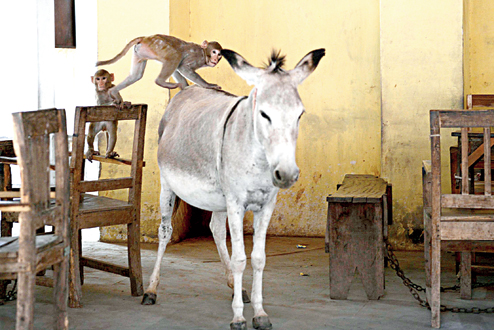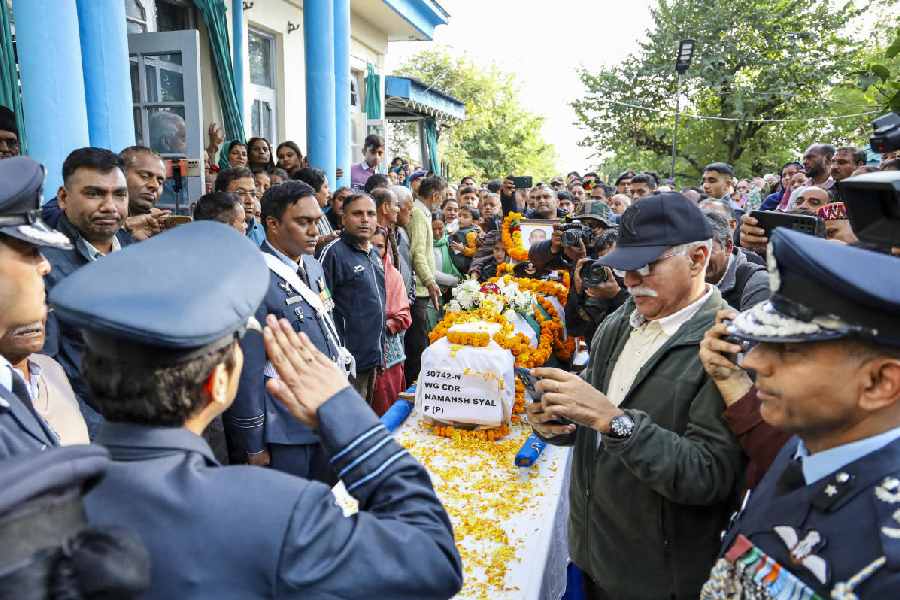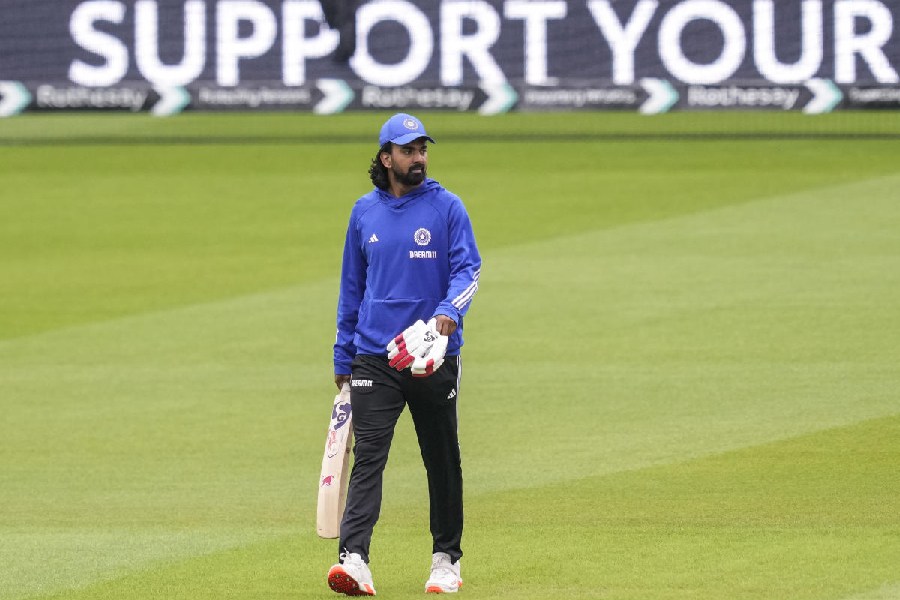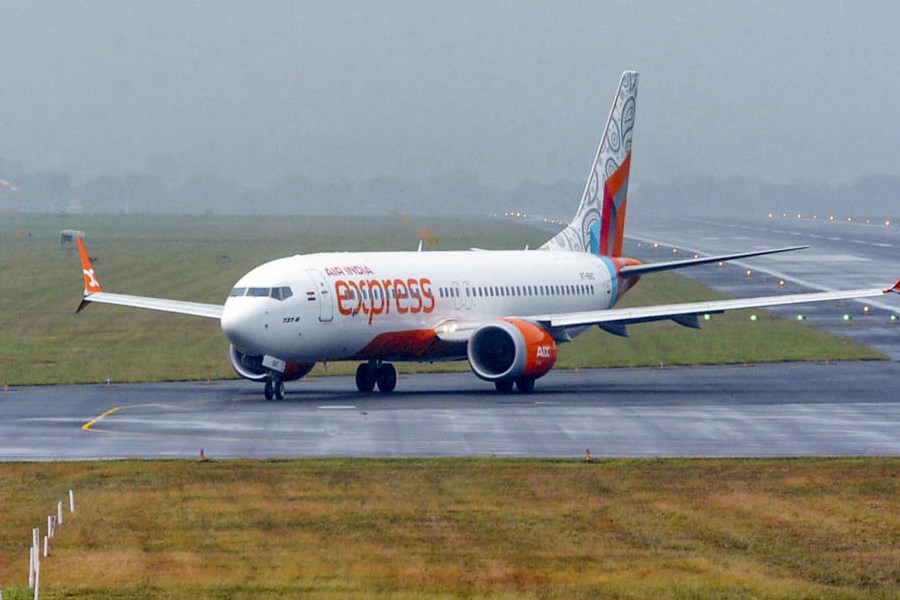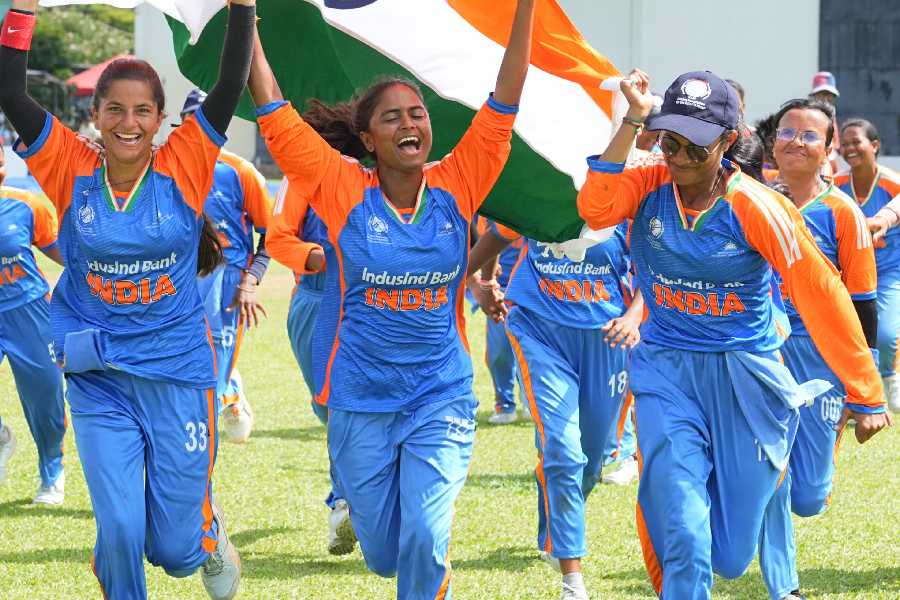
Dholpur, July 2: If Dholpur had an official animal, it had to be the donkey.
They are everywhere: this sleepy eastern Rajasthan city of 1.3 lakh has stray donkeys like other cities have street dogs.
Some are pet donkeys, used for transport. Herds of them stand stoically inside buildings constructed in a Maru Gurjara-cum-Islamic style that house state institutions here, witnessing court proceedings and land registrations in a city yet to come out of its feudal moorings.
"Only donkeys will testify," a revenue official joked when this newspaper sought documents that might throw light on the property-grab controversy that suddenly slung Dholpur into the national limelight on Monday.

"Nobody who gives you anything against the palace can continue to hold his turban on his head in Dholpur," the official added, not joking any more, on condition he not be named.
"Palace" is a reference to the Dholpur City Palace, now converted into the Raj Niwas Palace Hotel but, to the local population, an enduring symbol of a bygone royalty and of their allegiance to it.
The hotel is run by Niyant Heritage, owned by Dushyant Singh, a BJP parliamentarian and scion of Dholpur's Bamraulia Jat royal family, his mother and Rajasthan chief minister Vasundhara Raje and his wife Niharika. Disgraced cricket czar Lalit Modi's investments in the company are being probed by the Enforcement Directorate.
The Congress claims the palace is government property, ceded by former Dholpur ruler Maharaj Rana Udaibhanu Singh after the British protectorate merged into the Union in 1949 on condition he would remain there till his death. He died in 1954.
Rajasthan's BJP government says the palace was returned to the royal family in 1958 in lieu of the Kesarbagh Palace, which now houses the Rashtriya Military School here. Dushyant is Udaibhanu's descendant.
Power of silence
Most Dholpur residents shrug when asked about the palace. A visit suggested one possible reason why.
Four tough-looking men suddenly appeared outside the palace gate to prevent The Telegraph team - this correspondent and photographer Prem Singh - from taking pictures.
"Many have been martyred over this palace," one of them said menacingly. "There are other ways in Dholpur of dealing with your tribe."
Residents said these " rajwada pehalwans" (royal musclemen) had been deployed after the controversy erupted on Monday. The hotel has been closed, reportedly for renovation, since shortly before the controversy broke.
The bureau chief of a local daily asked this reporter not to point at the palace while speaking.
"We have to live here. They have people everywhere, so please don't point at the palace. No official will talk, let alone the palace (hotel) staff. If at all anything is exposed, it will happen in Jaipur," he said.
"Over here, the last time a journalist wrote about the palace was around 2006. A reporter named Sanjay Jhagaria alleged the palace had encroached on public land. His legs were broken by unknown assailants."
He added: "Even after the hotel started in 2010, we have never had any idea who visits the place."
Congress member Ashok Sharma, who runs the city's largest movie theatre, seconded him.
As with many other high-end hotels in Rajasthan, Sharma said, the Raj Niwas Palace Hotel's guests usually came as part of extremely expensive package tours. They rarely travelled around the hot and dusty city whose economy is dominated by agriculture and sandstone mining.
"They come in luxury buses with tinted windows. There are rumours that celebrities host parties there," Sharma said.
"Recently, we learnt that a Hindi tele-serial was shot there. But I have never seen any guests roam the city, nor have I seen Lalit Modi."
Dynasty lore
The European-style palace, made of red sandstone in 1876 to host British Prince Albert Edward, stands on a 13-acre compound and is estimated to be worth over Rs 200 crore.
Udaibhanu's grandson (whom his widow later adopted) and the last titular ruler of Dholpur, Hemant Singh, continued to live here till his separation from wife Vasundhara in the 1970s.
After a long legal battle, Hemant relinquished all his assets in Rajasthan to his son Dushyant in 2007.
When the National Highways Authority of India acquired a part of the estate to expand the Delhi-Gwalior highway in 2010, it paid a compensation of Rs 1.97 crore to Dushyant. But the Congress says Dushyant claimed the money by fraud since, according to the party, he never owned the property.
Hemant now shares a bungalow with his brother Hanuwant, the last ruler of Nabha in Punjab, in Lutyens Delhi's Panchsheel Marg, more than 250km from Dholpur.
The palace symbolises a turbulent history between Dholpur's Bamraulia royals and the Gwalior-based Scindias, the family to which Vasundhara belongs.
R.N. Shrotriya, the custodian priest of Narsinghji ka Mandir, the abode of the Bamraulia family deity, recounted the legend of the first Maharaj Rana Kirat Singh of Gohad, now in neighbouring Madhya Pradesh.
Kirat was crowned in 1803 and helped the Bengal Army end Maratha rule in Gohad the following year. But at the end of the Anglo Maratha War, he lost his kingdom to the Scindias under the revised Treaty of Surji-Anjangaon in 1805 between Gwalior and the East India Company.
The Scindias' prowess for diplomatic intrigue had left him landless, much like his descendant Hemant was outmanoeuvred legally by Vasundhara two centuries later and had to cede Dholpur to Dushyant.
Wandering in the Chambal Valley, Kirat was presented with an inch-tall statue of the Narasingha avatar of Vishnu. The mendicant who gave it to him said he would become a ruler again if he worshiped the idol for six months.
Kirat fashioned it into a pendant and wore it round his neck. After six months, the commander-in-chief of India, Lord Gerard Lake, rewarded the Jat chieftain for his loyalty to the Crown by presenting him with Dholpur and its fort at Shergarh on the west bank of the Chambal in lieu of Gohad.
Deity's city
"I am a sixth-generation priest at this temple I took over from my father in 1989," said Shrotriya, a medical practitioner and a BJP district general secretary.
"Narsinghji is the actual ruler of Dholpur. Before Dholpur's merger with India, the idol would be carried to the durbar in the palace. The raj tilak would be performed and the idol would be placed on a throne above the Maharaj Rana. The Dholpur state forces used to give Narsinghji a guard of honour."
The temple, now under the state government's devasthan department, was shifted last century to the ruined Purani Dyodi harem quarters, a property lying outside the palace premises and said to belong to Dushyant.
"Maharaj (Hemant Singh) and Vasundharaji came to this temple after their marriage; so did Dushyantji and his wife after theirs. For the wedding of Hemantji's daughter Rudrani (from his wife Bhawani of the Vana royal family in Gujarat) in 2008, one card each was sent for Narsinghji and my family with a kilo of sweets and Rs 1,100," Shrotriya said.
"The last time Hemantji came here was when he campaigned for the Congress in the 1980s. Vasundharaji comes here every time she files her nomination from Jhalawar, even if it is at midnight."
Shrotriya said Dushyant too worshipped here whenever he visited Dholpur "although I haven't seen him for around two years". He said Hemant had kept his "other family" in Delhi away from the public glare by not bringing them here.
"It's the state that has encroached on royal properties. The courts, schools and offices all run out of royal premises," Shrotriya claimed.
Sharma, the Congress member, said the latest controversy had hardly affected Dholpur residents.
"For the local people, the palace has always been held by the royal family although they rarely stayed here since Hemant Singh left," he said.
"People don't care about the encroachment because it's on public works department land and not private property. What happens behind those walls is known only to those inside them."
Trilok Singh, perhaps the oldest living employee of the erstwhile Dholpur state who rose to become munshi or titular "Prime Minister", is well into his 90s and settled in Rikhanikhal, Uttarakhand. He refused to say anything on the property-grab controversy.
"I worked for the royal family from 1947 till 2007. Please understand, I worked that long with them because I'm loyal to them. I can't speak to you without orders from the Maharaj (Hemant)," he said over the phone.


